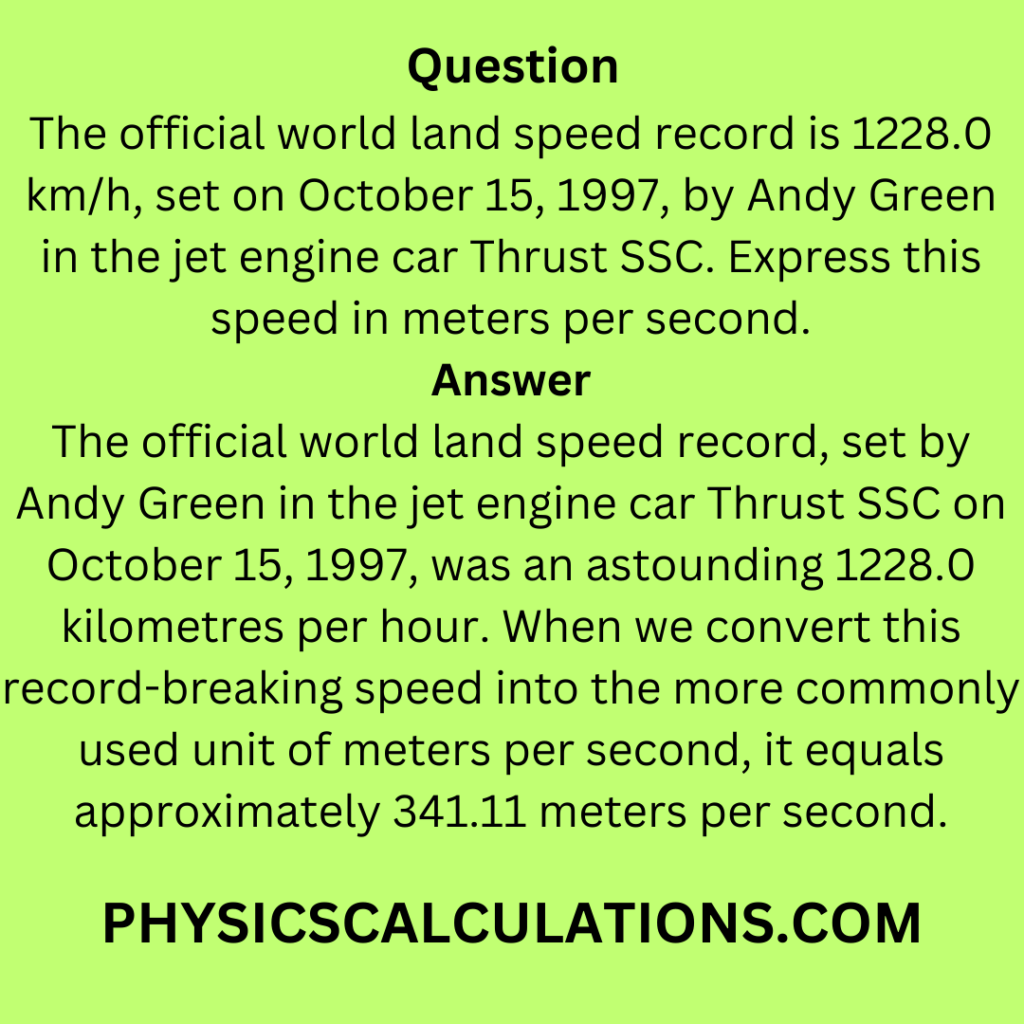Question
The official world land speed record is 1228.0 km/h, set on October 15, 1997, by Andy Green in the jet engine car Thrust SSC. Express this speed in meters per second.
Answer
The speed of Andy Green in meters per second is 341.11 meters per second

Explanation
Step 1: Understanding the Conversion Factor
We need to utilise the appropriate conversion factor to convert from km/h to m/s. The conversion factor relates these two units and is based on the fact that 1 kilometre equals 1000 meters and 1 hour equals 3600 seconds. Therefore, the conversion factor is:
1 km/h = (1000 m) / (3600 s)
You may also like to read:
A cross-country skier skis 1.00km north and then 2.00km east
Step 2: Applying the Conversion
Now that we have the conversion factor, we can apply it to the world land speed record of 1228.0 km/h to express this speed in meters per second.
Speed in meters per second (m/s) = Speed in kilometers per hour (km/h) × Conversion Factor
Now, our Speed in m/s = 1228.0 km/h × [(1000 m) / (3600 s)]
Step 3: Performing the Calculation
Let us calculate the speed in meters per second.
Speed in m/s = 1228.0 km/h × [(1000 m) / (3600 s)]
We will now have: Speed in m/s = 1228.0 × 1000 / 3600
Therefore, Speed in m/s = 341.1111111111 m/s (approximately)
So, the world land speed record of 1228.0 km/h is approximately equal to 341.11 meters per second.
Conclusion:
The official world land speed record, set by Andy Green in the jet engine car Thrust SSC on October 15, 1997, was an astounding 1228.0 kilometres per hour. When we convert this record-breaking speed into the more commonly used unit of meters per second, it equals approximately 341.11 meters per second.
This conversion highlights the incredible velocity achieved by Thrust SSC and Andy Green. It also provides us with a perspective of the speed in units that are more familiar in the world of physics and everyday life. It’s a remarkable feat in the history of land speed records. Additionally, it is a testament to human engineering and innovation in pushing the boundaries of what’s possible on land.